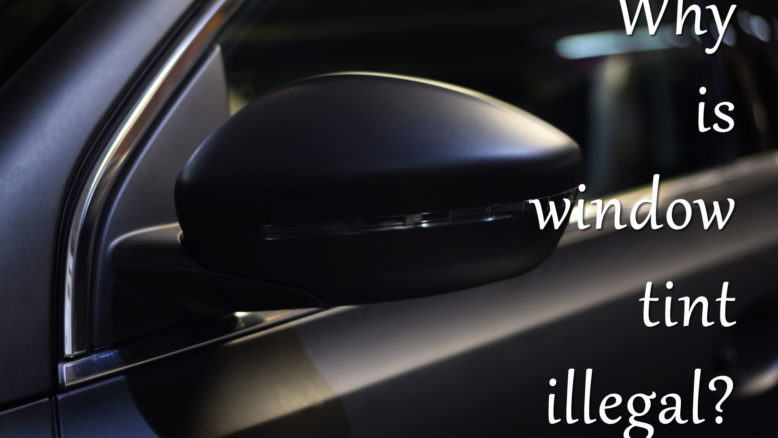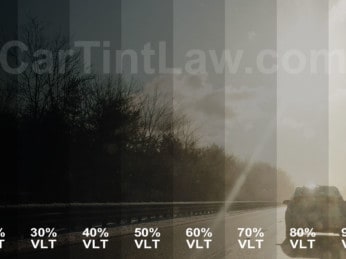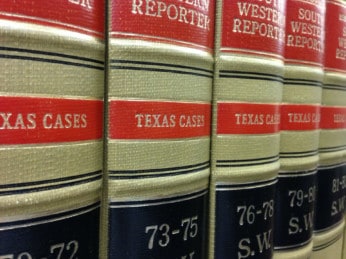Tinting windows on vehicles is regulated in each state separately. Tint darkness can vary greatly, and what is legal is some states is illegal in others.
So why these restrictions and discrepancies? Why is window tint illegal? We already talked plenty about window tinting benefits: it increases security, avoids excessive heat inside the car, prevents the interior from cracks and fading, and it even protects our eyes.
But there can be some negative consequences as well. We learned a lot of our readers are interested in understanding why some states restrict car window tint, so let’s take a brief overview of tinting downsides.
1. Tinting prevents eye contact
Pedestrians, cyclists, motorcycle riders and even other car drivers benefit greatly from being able to make eye contact with you. Not being able to see inside an incoming vehicle when attempting to cross a street can be dangerous as you have no indication on whether a driver spotted you or not.
For all you know the driver may be texting or otherwise not paying attention. This is just the main reason why in most states and other countries outside the U.S. tinting windshields and even front passenger windows is illegal.
2. Tinted windows make police officer’s jobs more dangerous
Even in states where tinting laws are more liberal and allow higher darkness levels, it’s usually law enforcement pushing for additional restrictions.
Police officers have a much harder time seeing inside your car when you have excessive tinting on driver side of your vehicle. With low light transmittance tint film and in poor lighting conditions (i.e. night) they can’t see inside vehicles, which is dangerous for both the officers and drivers.
How many times did you see a police officer holding his gun holster while approaching a vehicle? They are trained to be paranoid. Besides, there are countless cases with fatal results where officers of the law shot unarmed drivers. It’s always best to roll down your windows. And, it’s extremely important to do so if you have window tint.
Imagine yourself in cop’s shoes for a moment: would you feel comfortable approaching a vehicle if you couldn’t see what was going on inside?
With all due respect to law enforcement officers, we all know many are very trigger happy. We are in constant contact with lawyers who have seen many questionable cases. For your own but also police officers protection you don’t want to give them any reason to be nervous. Avoid using excessive darkness on front side windows even if it’s legal in your state.
3. Cops can’t see you texting or using mobile phone
Another reason why police officers are pushing for more restrictive legislation in many states is the fact they have a harder time spotting distracted drivers.
Phoning or texting while driving is illegal nearly everywhere. It’s almost impossible finding an officer who will not ticket you for distracted driving. Same goes for wearing a seat belt.
In some states distracted driving is not a primary offense and police are not allowed to stop you because of it. However, this isn’t the case in all of United States.
4. Drivers have a more difficult time seeing outside
Tint with lower VLT (Visible Light Transmittance) blocks more light, and anything below 50% VLT can be very dangerous in poorly lighted conditions. Would you consider driving with sunglasses at night optimal? The answer is undoubtedly no. Very dark windows can make it extremely difficult to see the road or pedestrians at night.
That’s the reason why in most states you can tint windows behind the driver with darkest tint levels. Front side windows and especially front windshields have more strict regulation.
5. Safety during crashes
This reason is certainly controversial, but does have certain merit. Window glass on vehicles is supposed to shatter into very small pieces during a crash, and tint film can hold it together.
Larger pieces of glass held by tint film can turn into more dangerous “sharp projectiles” able to injure drivers or passengers. Large chunks of glass glued together can travel with greater force during a collision and are able to penetrate skin more easily.
On the other hand, tinting film can hold your glass together, therefore preventing little chunks from flying into your eyes or causing small cuts over your face or body. This is why many experts don’t necessarily agree that window tinting is dangerous.
Conclusion
We outlined 5 most important reasons why window tint is illegal in United States. Few states have banned tinted windows completely, but most of them allow a certain level of darkness on back side windows and rear windshield.
Don’t forget, most cars nowadays come with factory tinted windows down to 70% VLT. Federal regulations permit this factory tint level even if your state laws say otherwise. This percentage is enough to block most UV rays and reduce glare.
As we always recommend, go legal. Check your state laws and do not install any illegal window tint. Unlawful tint will result in unnecessary traffic tickets and inconvenience during vehicle inspections. Worse yet, it will also draw unwanted attention from law enforcement officers.




